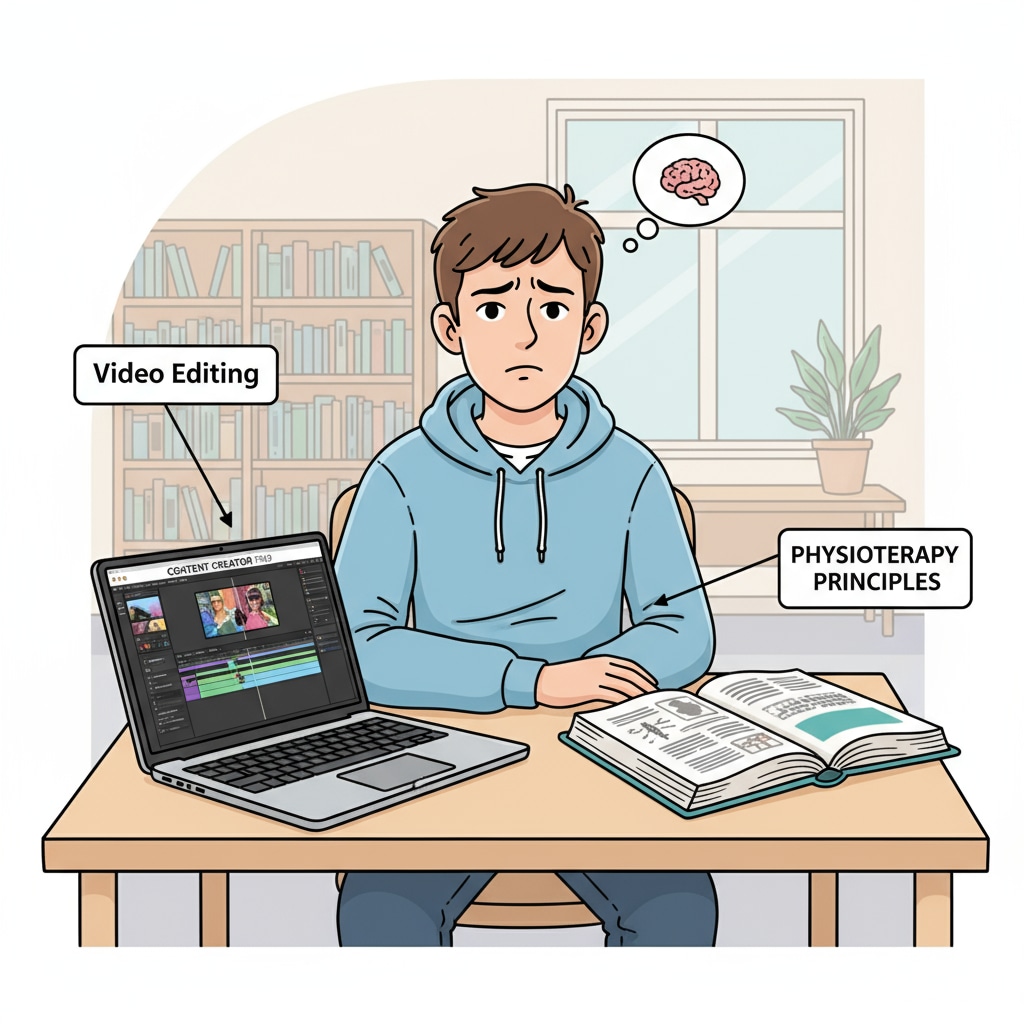The journey from a physiotherapy degree to content creation is often fraught with career uncertainty. For many young people, the allure of a creative field can be strong, but it may also bring about a sense of disorientation. Take, for example, a young individual who once dreamed of a career in physiotherapy but decided to pivot towards content creation. This shift not only represents a change in career path but also highlights the lack of proper guidance in the modern education system.

The Physiotherapy Dream Fades
Many students enter the field of physiotherapy with high hopes. They are drawn by the prospect of helping others regain their physical health. However, as they progress through their studies, some realize that their true passion lies elsewhere. In the case of our young protagonist, the long hours of studying complex medical theories and practical training in a clinical setting started to feel overwhelming. The initial excitement of a career in physiotherapy began to wane. This is a common scenario where students find themselves in a situation of career confusion, not knowing whether to stick with their original choice or pursue a new path.

The Allure of Content Creation
On the other hand, the world of content creation offers a different kind of appeal. It provides an outlet for creativity, allowing individuals to express themselves in various forms such as writing, video production, and graphic design. Our young person discovered this new passion during their free time, exploring social media platforms and seeing the potential for creating engaging content. The idea of building an online presence and connecting with a wide audience was enticing. As a result, they made the bold decision to abandon their physiotherapy degree and dive into the world of content creation. But this decision did not come without its challenges.
The lack of vocational education during the K12 phase is a significant factor contributing to such hasty decisions. Students are often not exposed to a wide range of career options or given the tools to evaluate their true interests and capabilities. According to Britannica’s Education section, a comprehensive vocational education curriculum in K12 can help students make more informed career choices. Without it, young people may find themselves in a state of career disarray, like our protagonist.
The Career Crisis Sets In
Once in the content creation field, the young person quickly realized the harsh realities. The competition is fierce, and breaking into the industry is no easy feat. There is a lack of a structured career path, and the income can be inconsistent. They started to experience self-doubt and a sense of being lost. This is the career crisis that many young people face when making a significant career transition without proper preparation. Wikipedia’s page on Career Development emphasizes the importance of having a clear plan and support system during career transitions. In this case, the lack of both in the K12 education left the young person ill-equipped to handle the challenges of the new career.
Another aspect of this crisis is the feeling of wasted time and effort on the abandoned physiotherapy degree. There is a sense of regret for not having explored other options earlier. This further adds to the emotional turmoil and career confusion.
K12 Education: The Missing Link
K12 education has a crucial role to play in preventing such career crises. Firstly, it should introduce students to a diverse range of career options from an early age. This can be done through career fairs, guest lectures, and internships. By exposing students to different fields, they can develop a better understanding of their interests and skills. Secondly, K12 schools should provide career counseling services. Professional counselors can help students assess their strengths and weaknesses and guide them in making appropriate career choices. Finally, incorporating vocational training into the curriculum can give students practical skills relevant to different industries. This way, when they reach higher education or enter the workforce, they are better prepared for the challenges ahead.
Readability guidance: The article uses short paragraphs to present ideas clearly. Each H2 section has a focused discussion. Lists could be further added in future expansions. The passive语态 is kept to a minimum, and transition words like ‘however’, ‘as a result’, and ‘on the other hand’ are used to enhance the flow.


